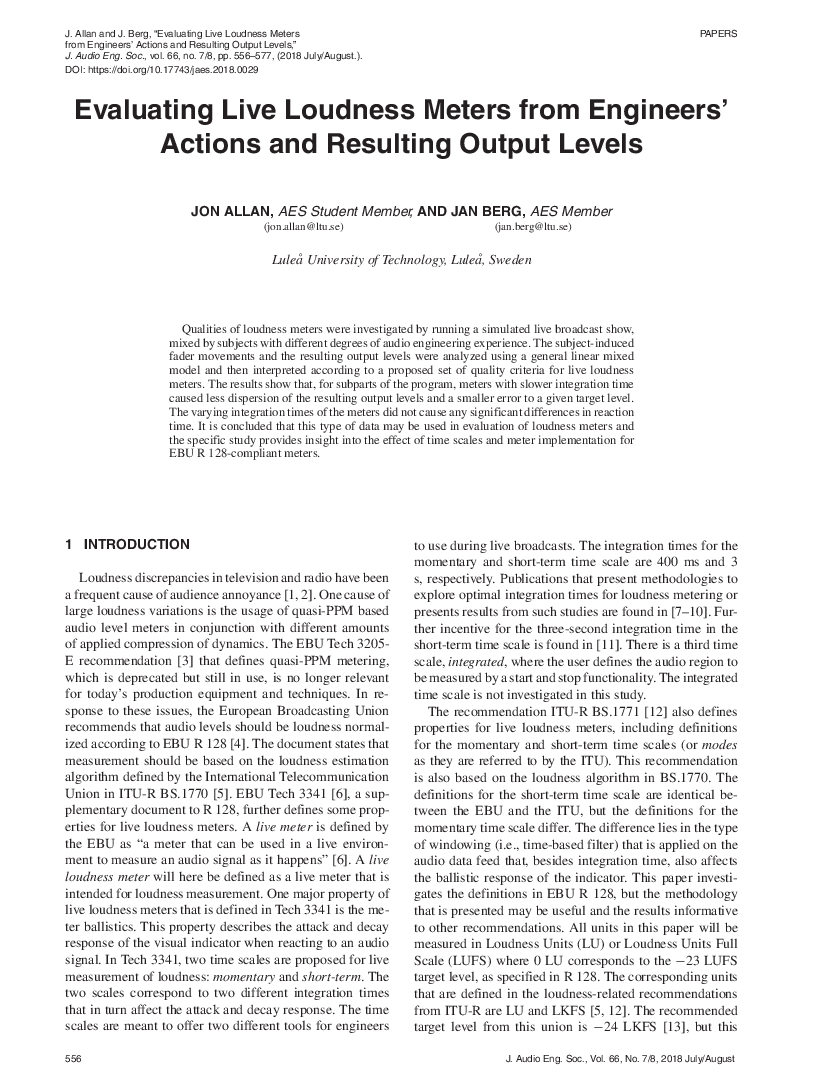Home / Publications / E-library page
You are currently logged in as an
Institutional Subscriber.
If you would like to logout,
please click on the button below.
Home / Publications / E-library page
Only AES members and Institutional Journal Subscribers can download
Loudness discrepancies in television and radio frequently produce listener annoyance. Variations in loudness can be traced to the use of quasi-PPM based audio level meters in conjunction with different amounts of compression dynamics. A satisfactory live loudness meter should assist the engineer to: (a) achieve the recommended target level for a program, (b) compensate for content-dependent delimited offsets in loudness, and (c) compensate for fast changes in loudness. This paper investigates how the ballistic properties of live loudness meters affect the engineers’ actions with fader position and the resulting output levels. In order to explore the quality of loudness meters, the researchers simulated a live broadcast show with mixing engineers who had different degrees of experience. The resulting output levels were analyzed and interpreted using a linear mixing model. The results showed that the meters with the slower integration times produced less dispersion of output levels for parts of the program. Varying integration times of the meters did not cause a significant difference in the reaction time.
Author (s): Allan, Jon; Berg, Jan
Affiliation:
Luleå University of Technology, Luleå, Sweden
(See document for exact affiliation information.)
Publication Date:
2018-07-06
Import into BibTeX
Permalink: https://aes2.org/publications/elibrary-page/?id=19706
(521KB)
Click to purchase paper as a non-member or login as an AES member. If your company or school subscribes to the E-Library then switch to the institutional version. If you are not an AES member Join the AES. If you need to check your member status, login to the Member Portal.

Allan, Jon; Berg, Jan; 2018; Evaluating Live Loudness Meters from Engineers’ Actions and Resulting Output Levels [PDF]; Luleå University of Technology, Luleå, Sweden; Paper ; Available from: https://aes2.org/publications/elibrary-page/?id=19706
Allan, Jon; Berg, Jan; Evaluating Live Loudness Meters from Engineers’ Actions and Resulting Output Levels [PDF]; Luleå University of Technology, Luleå, Sweden; Paper ; 2018 Available: https://aes2.org/publications/elibrary-page/?id=19706